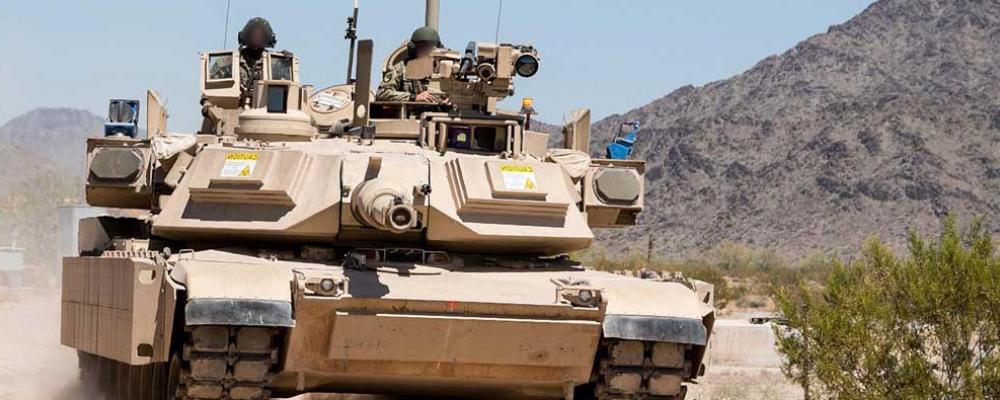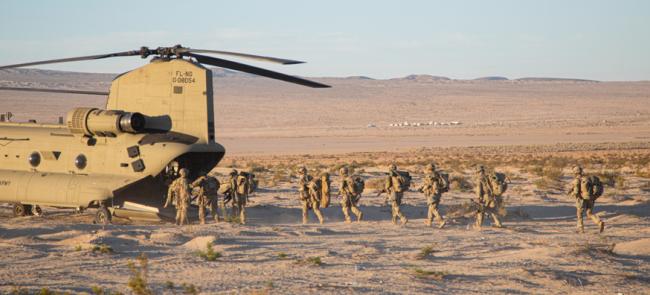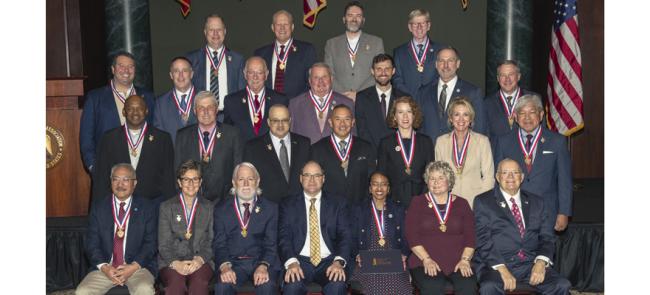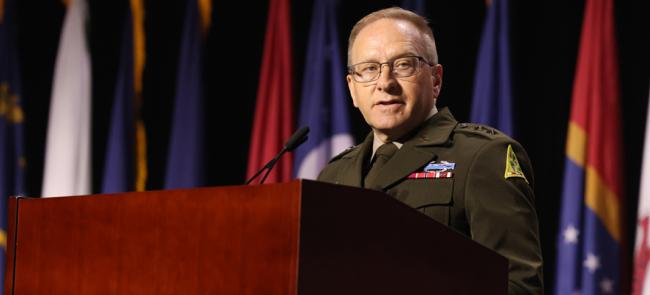
Fresh Tracks
Members of the 278th Armored Cavalry Regiment are fired up, says their commander, Col. Steven Turner, even though the object of their enthusiasm is still a year away.
That’s what happens when members of an armored brigade or an equivalent, such as the 278th, learn they are set to receive the Army’s latest tank straight from General Dynamics, especially when the unit has never had tracked vehicles on par with the active component.
“Soldiers want to work with the best equipment, and they deserve it,” Turner says.
Now, his troop will have the Army’s best tank — the Abrams M1A2 SEPv3, or System Enhancement Program version 3 — even before some active-component units. The V3s, as they are often called, will replace the largely analog M1A1 Abrams Integrated Management-Situational Awareness tanks the regiment has had since 2008, which are an upgraded version of the M1A1s the unit has had since the early 1990s, Turner says.
Comprised of roughly 3,000 troops, the Army National Guard regiment is based in Tennessee, where Turner is the full-time chief of staff, with a squadron in Texas and an unmanned aerial vehicle company in Maryland.
The fiscal 2022 defense appropriations bill the president signed March 11 includes $1.1 billion for 90 V3 tanks for the Guard. Eighty-seven will arrive at the 278th fresh from the factory next year. The regiment will be the first of three Guard armored brigades to receive the new variant under the Army’s Abrams Upgrade Program, according to the National Guard Bureau.
Others are the 1st Armored Brigade Combat Team, 34th Infantry Division, headquartered in Minnesota, and the 30th Armored Brigade Combat Team, headquartered in North Carolina. Both also currently operate the older AIM-SAs. Plans call for them to have V3s by fiscal 2025, NGB says.
Five armored brigades are in the Guard. The 155th Armored Brigade Combat Team, headquartered in Mississippi, and the 116th Cavalry Brigade Combat Team, headquartered in Idaho, have the M1A2 SEPv2, which was the Army’s most advanced tank until the service started fielding the V3s in 2020. They will continue operating their current tanks.
This new mixed fleet will mirror the Army’s overall composition. “The Army, as a whole, will have two tank variants — V2s and V3s — in both the active Army and Army National Guard,” says an Army Guard equipment modernization white paper NGB provided to NATIONAL GUARD.
Interoperability not previously possible across the Army’s tank formations will be the result, says Maj. Gen. Jimmie Cole, a former commander of the 278th, the current deputy adjutant general of Tennessee and the NGAUS vice chair-Army.
Turner offered a practical example of one of its benefits. “Let’s say we deploy and we replace somebody over in another country,” he explains. “With the same platform, we could potentially just fall in on their equipment, and not have to worry about being on different platforms and different versions. This brings us on par with our active-duty counterparts.”
Soldiers want to work with the best equipment, and they deserve it.
—Col. Steven Turner, the commander of the Tennessee Army National Guard's 278th Armored Cavalry Regiment
Arguably, the 278th and the other two Guard brigades receiving the V3s are skipping a generation of tank modernization. The new tanks are an improvement not only on the M1A1s, but also on the V2s, providing tank crews with “greater lethality and survivability,” Cole says.
The V3 boasts additional armor in the turret and hull to better defend against multiple threats, including improvised explosive devices. An underbelly IED kit includes floor stiffeners and stronger internal support structures to prevent injury to crewmembers’ limbs, according to the Army.
A major new feature is the improved 120mm smoothbore cannon ammunition, whose detonation mode can be set by the gunner before a round is fired. Its three settings — detonate on impact, with a delay or with an airburst — mean a single round can replace those different types of munitions, thus easing the burden on logistics.
Other upgrades include a new communications system, which can be fully integrated into the unit’s command and control network, as plus a new auxiliary power unit to improve fuel efficiency. The V3 also adds a remotely operated .50-caliber machine gun.
Turner, a long time tanker, likes to talk about the Commander’s Independent Viewer, a feature included on the V2 but not the M1A1. It provides the tank commander a separate sighting system from the gunner and more situational awareness on the battlefield.
The game-changer at home station, Turner says, will be the V3’s onboard training capability.
By leveraging this digital toolset, “you can conduct some of the preliminary gun tables, in a virtual environment on the vehicle, as opposed to having to go to a separate location to conduct the training in a simulator,” he says.
But maintenance personnel may be the biggest fans of the tank, Turner says. They will have to learn how to maintain a new system, but they should no longer have to scrounge hard for spare parts.
“Maintaining the M1A1s is tough,” he said. “The industrial demand for that old of a platform simply doesn’t ensure adequate repair parts are on the top of the production list for the part manufacturer. Keeping that fleet operational is extremely challenging.”
As part of the modernization, the three brigades will also be shedding their old M2A2 Operational Desert Storm-Situational Awareness Bradley fighting vehicles for M2A3s.
The 278th will get its 135 Bradleys from an active-component brigade at Fort Stewart, Georgia, which is converting to A4s, Turner says.
Training time to convert to the new tracks will be 12-24 months, according to NGB. Turner says the 278th will begin the process this summer.
“When you’re in the armored community, you hear about the new advances and enhancements and you look forward to the day that you’ll get that platform. But you don’t dwell on it,” he says. “We are a nation of soldiers, and we train to go to war with the equipment that we have.”
But one day soon, the 278th will have the tank with the advances and enhancements they’ve heard so much about for years.
The author is an Annapolis, Maryland-based freelance writer who specializes in military matters. He can be reached via [email protected].
The NGAUS Take
Bringing Army National Guard combat vehicles on par with those in the active-component Army has long been a NGAUS legislative priority. It’s about enabling the Guard to truly be the combat reserve of the Army. The Guard cannot be an asset the Army needs it to be if 60% of its tanks and Bradleys are of a different generation than active-component units. Nevertheless, Guard armored brigades with legacy tanks and Bradleys have deployed in recent years to Eastern Europe and the Middle East. The Abrams Upgrade Program is long overdue. It needs to be fully funded until complete.



